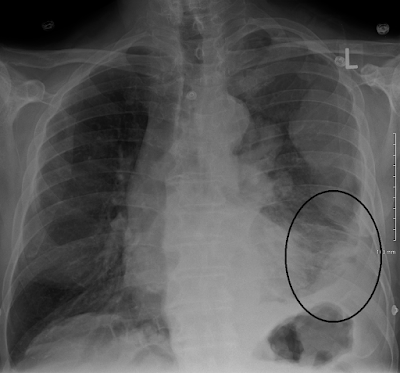By Todd Going
The three main types of malignant mesotheliomas are epithelioid,
sarcomatoid and mixed/biphasic. Epithelioid is the most common kind as
around 50-70% of all mesothelioma cases reported are this type.
Epithelioid also has the best chances of survival. It affects the
internal organs and internal surfaces coverings. Sarcomatoid is a much
more serious condition as it affects the secondary tissues in the body
such as cartilage, muscles, bone and fat. However, this cancer is much
rarer, as it only occurs 7-20% of the time.
Mixed/biphasic is having both types of the cancer at once, and this makes up 20-35% of the occurrences.
Like all other types of cancer, mesothelioma is incurable. Although doctors and scientists have made a great deal of progress for diagnosing and treating these malignancies, there is still no current way to completely get rid of it.
The affected areas from mesothelioma cancer are the lining of the internal organs in the body. Because of the location of the infected cells, mesothelioma does not respond well to conventional treatments unlike most other forms of cancer. In addition, there are no blatant symptoms of the disease, so doctors cannot properly diagnose the illness until it's significantly advanced. Because of these factors, the effectiveness of many conventional treatments are limited.
Even the best doctors in the world mistake early symptoms of asbestos related diseases with lesser conditions. Detection of mesothelioma relies mostly on associating proper symptoms with proper diagnosis because it is so subtle. If you have had exposure to asbestos, then you should alert your doctor of your medical history so they know what tests to look for and what tests to use.
High risk groups such as asbestos and construction workers must undergo frequent check-ups to monitor any conditions leading to mesothelioma. Because this cancer is so deadly, early diagnosis and treatment can help prolong life, but the mortality rate is usually 100% within five years.
Regardless of the type, mesothelioma is fatal. Survival rates are usually only 1-5 years after diagnosis. If you or a loved one has been affected by mesothelioma, you may have the legal right to seek compensation for your suffering.
Mixed/biphasic is having both types of the cancer at once, and this makes up 20-35% of the occurrences.
Like all other types of cancer, mesothelioma is incurable. Although doctors and scientists have made a great deal of progress for diagnosing and treating these malignancies, there is still no current way to completely get rid of it.
The affected areas from mesothelioma cancer are the lining of the internal organs in the body. Because of the location of the infected cells, mesothelioma does not respond well to conventional treatments unlike most other forms of cancer. In addition, there are no blatant symptoms of the disease, so doctors cannot properly diagnose the illness until it's significantly advanced. Because of these factors, the effectiveness of many conventional treatments are limited.
Even the best doctors in the world mistake early symptoms of asbestos related diseases with lesser conditions. Detection of mesothelioma relies mostly on associating proper symptoms with proper diagnosis because it is so subtle. If you have had exposure to asbestos, then you should alert your doctor of your medical history so they know what tests to look for and what tests to use.
High risk groups such as asbestos and construction workers must undergo frequent check-ups to monitor any conditions leading to mesothelioma. Because this cancer is so deadly, early diagnosis and treatment can help prolong life, but the mortality rate is usually 100% within five years.
Regardless of the type, mesothelioma is fatal. Survival rates are usually only 1-5 years after diagnosis. If you or a loved one has been affected by mesothelioma, you may have the legal right to seek compensation for your suffering.
To learn more about mesothelioma cancer centers, cancer cell types and pericardinal mesothelioma,
please visit our website.

